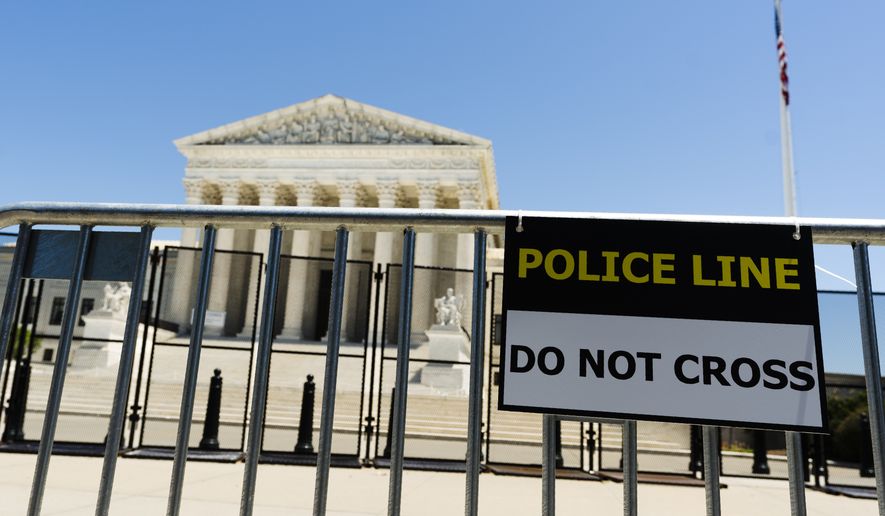OPINION:
Editor’s note: This is one in a series examining the Constitution and Federalist Papers in today’s America.
Amid the hysteria regarding recent Supreme Court confirmations, two proposals have arisen from the Democrats: court-packing and term appointments. Neither of these responses is particularly novel, and both would prove ultimately counterproductive.
The Constitution makes de facto lifetime appointments applicable to all Article III federal judges to include Supreme Court justices and federal district court and circuit courts of appeals judges. Article III, section 1 of the Constitution states that federal judges “shall hold their Offices during good Behaviour.” Even though lifetime appointments are nowhere mentioned in the Constitution, such phrasing effectively means that federal judges serve for life unless they resign or are impeached and removed (a true rarity).
The Framers of the Constitution certainly made no executive or legislative posts for life, although there were proposals to do so. Indeed, those in the House must run for office every two years, while those in the Senate must run every six years. Conversely, Supreme Court justices are not elected, but rather appointed, subject to Senate confirmation.
This disparate treatment can be easily explained. The Framers did not want justices to be concerned with elections or even reappointments, for such concerns might force them to curry favor with officials or to take certain positions in their judicial opinions that they might not otherwise have taken.
From this vantage point, lifetime appointments are designed to shield justices and other federal judges from the vagaries and influence of partisan politics. In short, lifetime appointments are meant to preserve intellectual honesty on the bench. Of course, the Framers also viewed the judiciary as the least “dangerous” branch of government. Were they around today, they might wish to reconsider.
It’s fairly (and sadly) obvious why Democrats remain keen to impose term limits for justices on the Supreme Court — the current composition of the high court does not favor them. That is surely not a valid reason for such significant change, but is their indignation nonetheless buttressed by sound reason? If terms are limited once, they could be limited again until the end result could be one-year terms on the bench.
Similarly, if the high court can be packed once, it can be packed again.
No one wants to see “geriatric justices” on the bench. At the time the Constitution was written, life expectancy was roughly half of what it is now. At some point, it is reasonable to ask whether the justices themselves might even be relieved at the prospect of a term limit.
Justice Ruth Bader Ginsburg served admirably until her death at age 87, but it was clear that she was not in good health toward the end of her term. Yet the absence of term limits, combined with our hostile political climate, compelled her to stay, despite the toll it took on her.
This path — staying in office despite personal preferences — is no doubt what many of our aged leaders in the executive and legislative branches do. But at least those officials must be reelected to stay in office.
Despite the intended aims of lifetime appointments, the mechanism has failed to shield justices from politics, and the judiciary has become ever more political. In fact, politics and a political judiciary feed on one another. As members of Congress routinely fail to legislate on important issues — either because of incompetence or for fear of alienating voters — those issues instead become matters for judicial consideration.
In essence, Congress now relies on “kicking the can down the road” and shifting decision-making to administrative agencies or the courts to avoid taking controversial positions.
That inevitably leads to political issues being resolved by and within the judicial system. Consequently, the politics of those appointed to the court become all the more obvious, leading to the circus-like spectacle of the hearings for Justices Clarence Thomas and Brett Kavanaugh.
The proper way to resolve this issue would be simply to do what the Constitution says. Congress should do its job — legislate — which would then allow the court to fulfill its role — resolving legal questions, rather than political ones.
Imposing term limits or packing the court only exacerbates the underlying pathology of our elected representatives’ refusal to fulfill their responsibilities.
Amending the Constitution to mandate term limits for Supreme Court justices also would be laborious by intent, as the Framers did not want the Constitution to get hacked to pieces by the passions of the American political scene. Some have suggested that no constitutional amendment would be required to change federal judicial appointments to terms, but such suggestions are too clever by half and only mirror ineffective past attempts to sidestep the Constitution’s amendment process.
The Constitution is not a perfect document, but it has served us well since the founding of the republic. Amending it requires serious and sober consideration. If the Democrats could maintain patience with the process, history and the odds suggest that the court may once again be staffed with justices more acceptable to their views.
• David S. Jonas is a partner at FH+H Law Firm in Tysons, Virginia. He was the first judge advocate to argue a case at the U.S. Supreme Court. He is an adjunct professor at Georgetown University Law Center and the George Washington University Law School. Erielle Davidson is the associate director of the Center for the Middle East and International Law at George Mason University’s Antonin Scalia Law School.





Please read our comment policy before commenting.